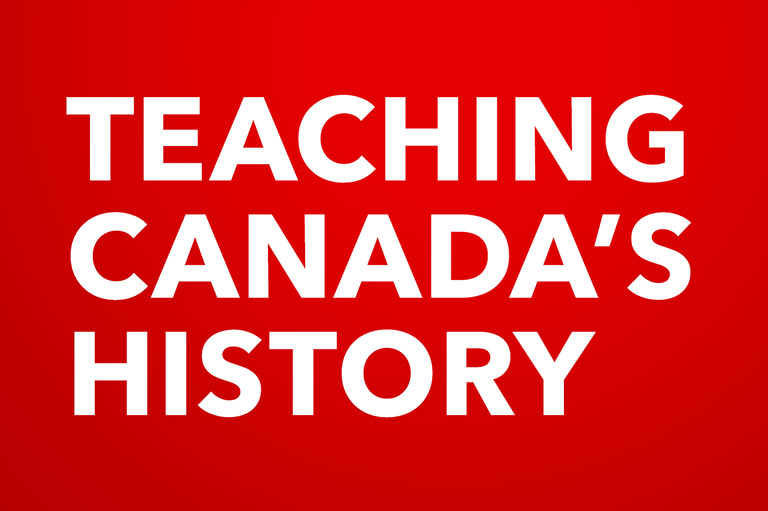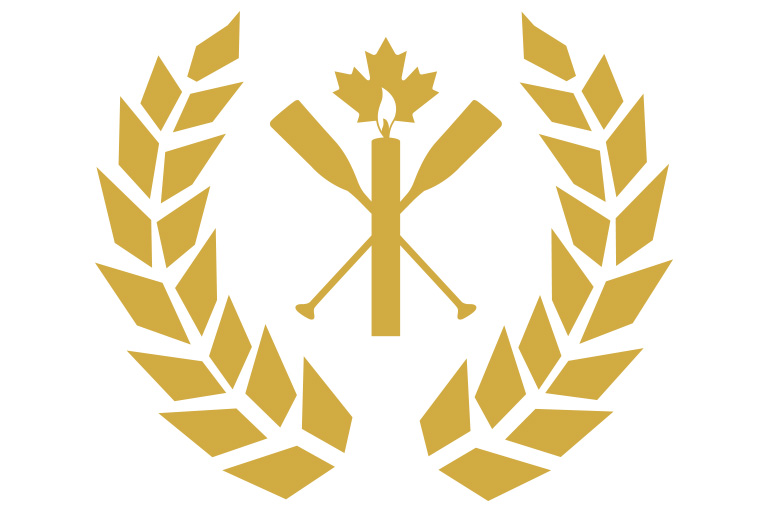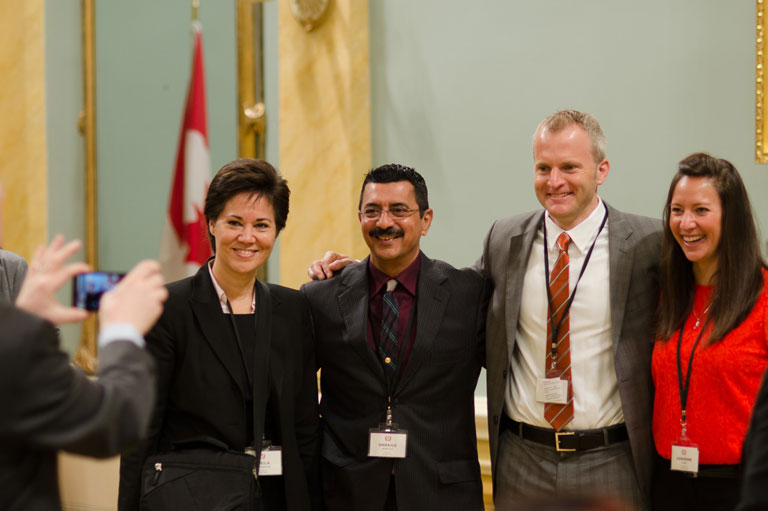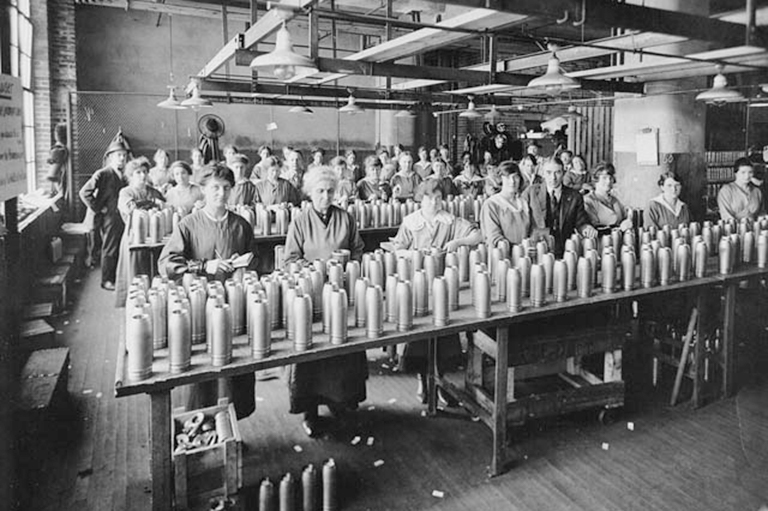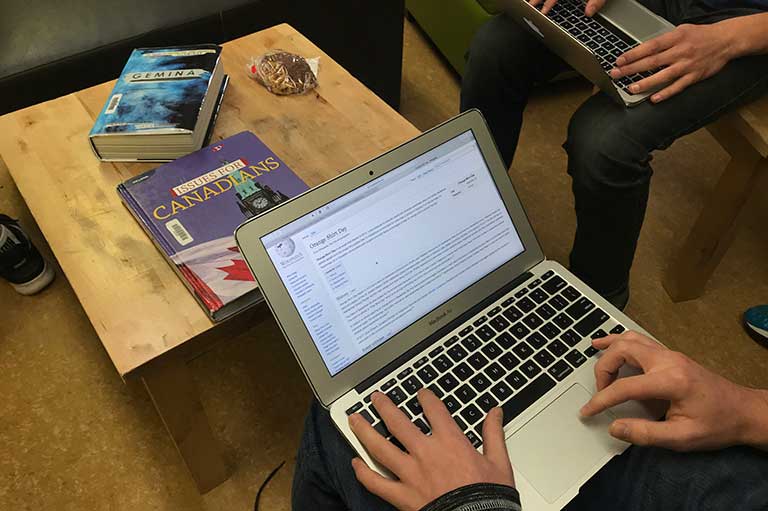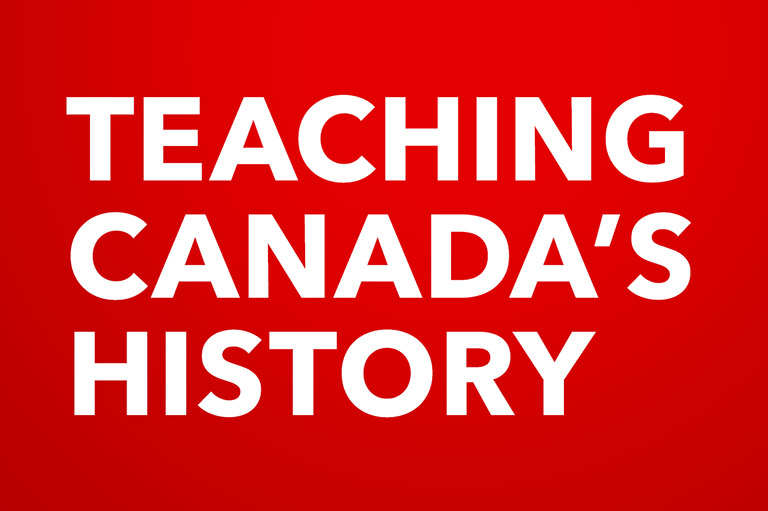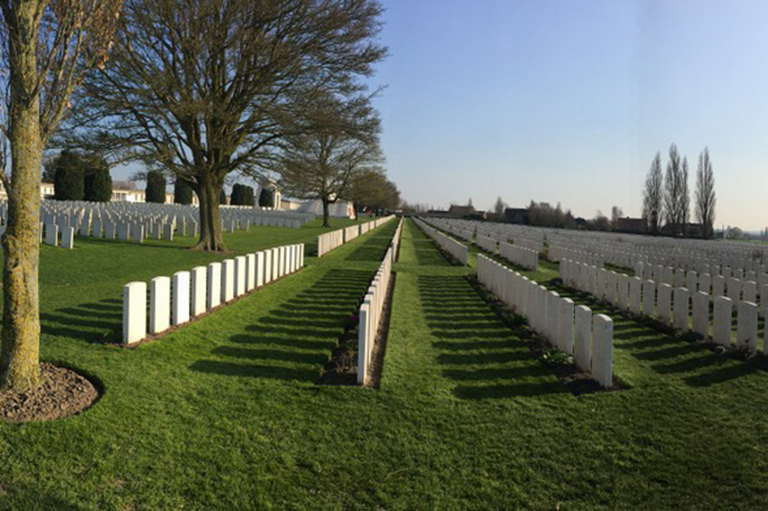Teaching Canada's History: 2022 Excellence in Teaching Finalists
Canada’s History recently spoke with the finalists for the 2022 Governor General’s History Award for Excellence in Teaching. This award recognizes teachers from across the country for their exceptional work in teaching Canadian history. It is also an opportunity to promote and facilitate the sharing of best practices and innovative teaching ideas within Canada’s history education community.
Listen in as host Julia Richards, Program Assistant, interviews teachers shortlisted for this award about their projects, teaching during the pandemic, and how they keep their students engaged in history.
Tanya Andersen
Milton District High School, Milton, Ontario
In answering the question, "To what extent have diverse voices shaped Canadian identity and culture?", students in Tanya Andersen’s high school history class can give a direct answer, do a deep dive into a topic of interest from the unit, or complete an "Andersen Assignment," which is an assignment that has more structure. For the unit question and the deep dive, students have a choice of medium through which to communicate their thinking. The “Andersen Assignment” requires students to follow the Design Thinking Process to examine the Grade 10 history textbook for gaps in coverage of a Canadian identity. This project allows students to critically examine the textbook and become advocates for change.
Tracey Salamondra and Carla Cooke
Hartney School, Hartney, Manitoba
Tracey Salamondra and Carla Cooke designed a cross-curricular project where students partnered with community members and organizations to create historical narratives for an interpretive trail expansion in a neighbouring community. The project capitalized on the assets of rural communities, strong relationships, and the ability to overcome obstacles that emerged while completing an inquiry project during the pandemic. The students interviewed current and former residents and worked with museum artifacts, digital archives, and local historians as secondary sources. After studying storytelling, narrative writing, and the writing process, students each wrote, edited, and fact-checked three narratives of their choosing. The project allowed students to see history as a living discipline and learn about their communities' stories, changing how they viewed their rural communities.
Cynthia Bettio
Our Lady Queen of the World Catholic Academy, Richmond Hill, Ontario
High school teacher Cynthia Bettio designed a semester-long project for her Grade 10 Canadian history course that is modeled after the Snapshots in Time cards, developed by Dr. Lindsay Gibson, Dr. Catherine Duquette and the Critical Thinking Consortium. The project culminated in students designing their own digital Canadian history timeline game with an emphasis on the narratives of marginalized groups over time. Students, with the support of STEM Minds Inc. and using Unity (a gaming language), developed an interactive Canadian history timeline game which will engage users in navigating key events in the history of 2SLGBTQ, women, immigrants, Indigenous groups, disabled people, and people of colour in Canada since 1914.
Melissa Moorhouse
Etobicoke School of the Arts, Etobicoke, Ontario
Melissa Moorhouse’s project, "Ethical Dilemmas — Then and Now," is an inquiry-based student experience within her class’s examination of key aspects of the Second World War. The project encourages meaningful personal development through reflection on transformational ethical questions. Through research, self-reflection, and conversation, students connect an ethical dilemma of the past to a contemporary Canadian issue. Embracing Universal Design for Learning, students can choose a medium of communication that best suits their learning styles and strengths. It combines the inquiry process, critical evaluation, and higher order thinking all with creative transformative outcomes. Rooted in diversity, equity, and inclusivity, it allows students to connect to their own identities and passions.
Luisa Fracassi
St. Joan of Arc Catholic Academy, Toronto, Ontario
Luisa Fracassi developed her project “Immigrant Voices” as an experiential learning opportunity for her high school students. First, students attended two virtual tours and a workshop run by the Canadian Museum of Immigration at Pier 21 in Halifax. The tours explored the immigrant experience by using memoirs, interviews, and other primary sources, while the workshops shared the history of and process behind conducting oral history interviews. Using what they learned from Pier 21, students conducted an oral history interview with an immigrant, transcribed the interview, and created a historical narrative in a magazine-style layout about their interviewee’s experiences.
Robert Jardine
Warman High School, Warman, Saskatchewan
Robert Jardine’s research-focused book project engages students in the process of writing history. Students co-create research questions and use those questions as frames to consider various periods in Canadian history. Over the course of the semester, students organize, research, locate images, and write chapters for a student-created history textbook that reflects their interpretation of significant events and peoples in Canada’s past. The intended outcome is that the students use a variety of competencies to create their textbook and that they begin to understand the power of past events in shaping their worldviews and the world they live in, as well as roles that individuals, organizations, and institutions wield in the creation of history.
Barbara Ann Giroux
Holy Family School, Ottawa, Ontario
Barbara Ann Giroux’s first grade class embarked on a vibrant learning journey toward reconciliation. It included participation in the First Nations Child & Family Caring Society’s Reconciliation Ambearrister program, as well as an in-class project on the UN Declaration of the Rights of the Child. Upon class request, it evolved to include all interested students in the school, with the purpose of developing an understanding of equity issues facing many Indigenous communities and TRC Calls to Action within the school. The class shared weekly posts about human rights injustices faced by Indigenous peoples in Canada and invited students to offer their opinions to the weekly question, “Do you think all children in Canada have the same human rights?” The Grade 1 students became knowledgeable leaders in the school, while their teacher became a more reflective practitioner.
Andreya Padmore
Orde Street Public School, Toronto, Ontario
In Andreya Padmore’s class, students learned about current and historical events that Canada should be proud of, as well as those that took Canada time to recognize and accept responsibility for. Students went into this project with questions and interest about what happened in Canada and left with more questions, knowledge, and steps to take action toward creating a better future for Canada. For their final project, students were tasked with selecting a racialized Canadian trailblazer or a racialized Canadian inventor to research. Their work was published in a book that was professionally bound and placed in the library so others can learn about the amazing people that have come from Canada.
Jennifer Maxwell
W.J. Mouat Secondary, Abbotsford, British Columbia
After participating in an Indigenous-focused interdisciplinary class, students in Jennifer Maxwell’s class created real-world projects that could contribute to reconciliation. Throughout the course, students explored Indigenous contexts and histories, with topics about the legacy of colonial oppression including land claims (and the LANDBACK movement); Missing and Murdered Indigenous Women, Girls, and Two-Spirit persons; the Sixties and Millennial Scoops; residential schools and day schools; the Indian Act; the Band Council system; and the reserve system. Students then researched and explored the work of the Truth and Reconciliation Commission, specifically around the Calls to Action. Finally, for students to participate in their own act of reconciliation, they chose a topic, an audience, and a product to design to help their targeted audience engage in reconciliation.
Jonathan Giles
Earl Grey Senior Public School, Toronto, Ontario
In Jonathan Giles’ project, students seek to understand the complex legacies arising from the points of view of the Fathers of Confederation by creating a scripted dialogue between two figures of that time. Starting with a discussion on the removal of the statues of John A. Macdonald, students dig into the dominance of the Orange Order in 19th century Canadian politics and interrogate the commonalities in the treatment of Irish migrants and Métis peoples. This assists students to explain what spurred both Irish Fenians and the Métis to strike violently against the dominant political order of the Confederation era.
Themes associated with this article
Advertisement
You might also like...
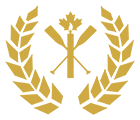
Nominations for the Governor General's History Award for Excellence in Teaching are accepted all year round.

